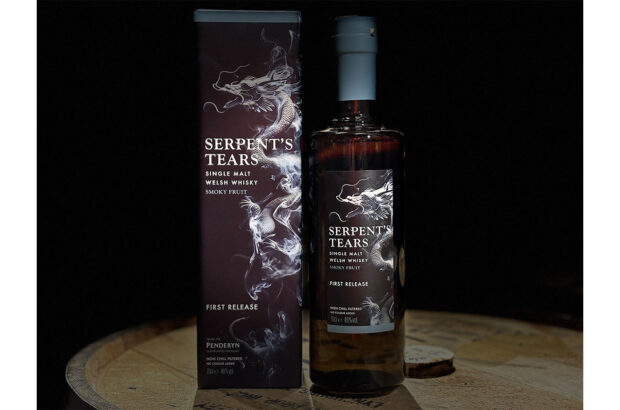Britain’s chief medical officer, Dame Sally Davies, fired a torpedo at the nation’s drinkers in the first week of 2016. Or did she? Let’s examine the facts.
At issue is the advice given to drinkers by the four Chief Medical Officers in the UK (Davies is the UK’s CMO – the equivalent of the USA’s Surgeon General – but there are also separate CMOs for Wales, Scotland and Northern Ireland). Davies is proposing reducing the present guidelines of 21 units of alcohol per week for men and 14 units a week for women to 14 units for all. A single bottle of wine at 13.5% equates to 10.125 units of alcohol – so the advice would be that ‘minimum-risk’ drinking equates to a quarter bottle of wine on five days plus two days off (with an extra glass of wine somewhere along the line). Days off are important – and pregnant women shouldn’t drink at all.
It is only a proposal; the consultation closes at the end of March, and wine merchants and others are welcome to respond to the proposal before then. And, of course, it’s only advice; we’re all free to ignore it. The advice is almost unchanged for women; the principal change affects male drinking.
You can see the complete list of supporting evidence used by the CMOs here, and you can also download every piece of evidence for yourself. The core piece of research is a report called ‘Mortality and morbidity risks from alcohol consumption in the UK’ prepared by the Sheffield University, and which in turn draws on guidelines thresholds in Canada and Australia. Having read every word of this, I see three main changes from similar documents in the past. The first I have no objection to. The second is a puzzle. The third is toxic.
The first change is that the research data regarding risk from alcohol consumption is being treated with much more scrupulousness than in the past, and the Sheffield document is in many ways of more interest to medical statisticians and epidemiologists than medical practitioners. You could summarise this by saying that if the former advice was cautious, the new advice is extremely cautious.
To contextualise this, almost all of us will be doing far more risky things in our lives than by modestly exceeding the new safe drinking limits (not more than doubling them, let’s say, in any given week). However the UK government is not providing advice on those other risks.
Examples? I regularly cycle around my village without wearing a crash helmet, climb into cars driven by strangers, and attempt to change light bulbs while standing on a rickety chair. There is no advice from Dame Sally about standing on rickety chairs, so I don’t worry about it. I sometimes have no option to being driven by others (who may be on the verge of a heart attack, medicated to their eyeballs or merely half-asleep), while I know I’m an idiot for not wearing a crash helmet on a bike for short journeys as well as longer ones.
Most people, though, will not be correlating every item on their risk menu in this way, so they may end up by worrying too much about the risks connected with alcohol.
What about identical levels of consumption for men and women? It’s counterintuitive to think that an ordinary glass of wine will have the same health impact on a rugby player or a sumo wrestler as it will on a ballerina. The puzzle is that most of the data in the Sheffield document suggests that alcohol-related risk is indeed lower for women than for men per unit consumed, and not higher, despite their smaller size. (Size differences mean that women must have higher blood alcohol levels than men for a given level of consumption.)
But note that the study relates to morbidity and mortality, and remember that males tend to adopt more dangerous behaviour patterns (like wrestling or playing rugby – or making disease-inducing lifestyle choices in fast-food restaurants) than women. It was always thus: this is one reason among several why male births outnumber females. Once again, alcohol consumption needs to be seen as part of a bigger, overall risk picture.
So what’s toxic?
Those who heard Dame Sally Davies launch her proposals will have noted her scorn for the notion that moderate alcohol intake, particularly of red wine, could have beneficial consequences; she even described the general cardioprotective effects of a glass of red wine as an “old wives’ tale” on BBC Radio 4’s influential ‘Today’ programme (though she made a reluctant exception for women over 55). The British government — and Britain, it should be noted, has a tiny wine sector but a large beer sector and an enormous whisky and gin sector — resolutely refuses to distinguish between different forms of alcohol in respect of health.
The seven authors of the Sheffield University report concede that many of their graphs do indeed show a hockey-stick curve or a J-curve, indicating that there are benefits to moderate consumption of all alcoholic drinks (the below-the-line base of the ‘J’ to the left of the graph) before negative consequences kick in with rising consumption to the right of the graph, but they constantly denigrate the interpretations of the data which suggest this. If you choose to read this report, zoom to section 5.4.1.2 on pp.58-60 for a summary of the authors’ “strong reasons to conclude the [benefits are], at the very least, overestimated within standard epidemiological analyses”. Significantly, though, they provide no counter-evidence; they merely question the interpretations.
Among their suggestions (and these are also being made in the USA at present) is that the relative healthiness of moderate drinkers is due to a suite of decisions about exercise and diet and not to wine itself. In other words, wine is symptomatic of a healthy lifestyle, but not causal. It is also alleged that wine-friendly studies include among the non-drinker cohort those who have given up alcohol after heavy use, and therefore who already have alcohol-related poor health.
There have of course been many studies which show the benefits of red-wine consumption, especially since the French researcher Serge Renaud’s findings were aired on the US TV show Sixty Minutes (on November 17th 1991), and the notion that ‘a little red wine is good for you’ has driven the expansion of wine consumption around the world.
See the original Sixty Minutes show from 1991 below (Renaud’s comments on wine start from 3:30 onwards):
The perceived healthfulness of red wine is one of the principal reasons for the wine boom in China in recent years, and a principal reason why red-wine sales so comprehensively outweigh white-wine sales there.
A useful summary of the health benefits of red wine, and in particular those (like Madiran, Cahors, serious Bordeaux, Nebbiolo-based wines such as Barolo and Barbaresco, and other ‘tannic’ Italian wines such as Sagrantino di Montefalco) which are high in skin-derived phenolics and anthocyanins, and pip-derived procyanidins, can be found in Roger Corder’s carefully researched and argued book The Red-Wine Diet. Corder is Professor of Experimental Therapeutics at the William Harvey Research Institute in London. Corder’s own distinctive suggestion is not simply that ‘red wine is cardioprotective’, but that certain types of red (like those mentioned above) are both amply cardioprotective and are perhaps linked to increased longevity in certain populations.
I asked Corder for his response to the latest advice, and to the Sheffield study alluded to above. “My general comments,” he wrote, “based on studying the literature for many years is that the University of Sheffield report provides a very negative opinion using biased presentation of the literature to support the authors’ perspective, rather than employing the wider body of literature to achieve a balanced opinion on which future guidelines could be based. Also failure to examine data from different types of alcoholic drink largely devalues any conclusions about specific drinking behaviours.”
He also suggested that Davies’ remarks about the cardioprotective effects of red wine being “an old wives’ tale” is based on a key study (reference 14 in the University of Sheffield Report) with flawed sampling. “This study does not separate alcoholic drinks into different types, the study is women-orientated (<30% men), has a limited number of men from traditional red wine drinking countries (8% of the total cohort are from Greece, Italy, and Spain and it does not include any men from France in the study). The notion that the red wine is NOT cardioprotective cannot be based on a population where red wine is not the staple drink of the population.”
If the Chief Medical Officer of one of the world’s leading wine-consuming nations is going to claim that research findings suggesting a cardioprotective effect for red wine are illusory in some way, then we need to see better evidence than that which is on offer in the proposed new guidelines. It will be up to wine merchants and wine producers to lobby for this, since the Portman Group (the UK’s main alcohol lobbying organization) and the UK’s Wine and Spirit Trade Association will never make any kind of case for wine exceptionalism; the corporate power of UK spirit-producing companies and brewers will not countenance this.
Some one, though, needs to. If the notion that all wine is potentially harmful to health gains traction (there is “no safe level” of alcohol consumption, Sally Davies said on the ‘Today’ programme, in addition to denigrating the cardioprotective effect of red wine), then millions of cases will be lost from global consumption every year. This would be a tragedy not just for wine producers, but also for those moderate wine consumers whose health might otherwise have benefited from an almost-daily glass of tannic red wine. It’s time to act.
Updated 19 January 2016: Current guidelines in the UK equate to 14 units weekly for women and 21 for men.
More Jefford on Monday:

Jefford on Monday: The organic audit
Andrew Jefford provides an organic wine health check ahead of France's biggest organic wine show, in Montpellier, Languedoc-Roussillon...

Jefford on Monday: The Gimblett Report

Jefford on Monday: Wine is also a dream

Jefford on Monday: Meeting Sassicaia







